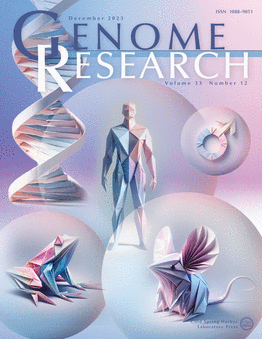解剖多层细胞-细胞通信与信号反馈回路从空间转录组学数据
IF 5.5
2区 生物学
Q1 BIOCHEMISTRY & MOLECULAR BIOLOGY
引用次数: 0
摘要
空间转录组学(ST)的出现为更好地破译细胞-细胞通信(CCC)提供了前所未有的机会。然而,如何整合空间信息和复杂的信号机制来推断功能性CCC仍然是一个重大挑战。在这里,我们提出了stMLnet,一种考虑空间信息和多层信令规则的方法,从ST数据中识别多层CCCs内的信令反馈回路。为此,stMLnet基于扩散和质量作用模型量化空间依赖性配体受体信号活动,并将其映射到细胞内靶标。我们将stMLnet与7种具有代表性的现有方法进行了比较,发现stMLnet在细胞间配体受体推断和细胞内靶基因预测方面都表现更好。我们应用stMLnet分析了来自不同空间转录组学技术的数据,如seqFISH+、Slide-seq v2、MERFISH和Stereo-seq,验证了其在不同空间分辨率和基因覆盖的ST数据上的鲁棒性和可扩展性。特别是,stMLnet揭示了covid -19感染肺组织ST数据中炎症反应背后的多层信号反馈回路。我们的研究为从ST数据中剖析多层配体/受体-靶标调控和多细胞信号通路提供了有效的工具,可以促进对空间CCC机制和功能作用的理解。本文章由计算机程序翻译,如有差异,请以英文原文为准。
Dissecting multilayer cell-cell communications with signaling feedback loops from spatial transcriptomics data
The emergence of spatial transcriptomics (ST) provides unprecedented opportunities to better decipher cell-cell communication (CCC). How to integrate spatial information and complex signaling mechanisms to infer functional CCC, however, remains a major challenge. Here, we present stMLnet, a method that takes into account spatial information and multilayer signaling regulations to identify signaling feedback loops within multilayer CCCs from ST data. To this end, stMLnet quantifies spatially dependent ligand-receptor signaling activity based on diffusion and mass action models and maps it to intracellular targets. We benchmark stMLnet against seven representative existing methods and found that stMLnet performs better in both intercellular ligand-receptor inference and intracellular target genes prediction. We apply stMLnet to analyze data from diverse spatial transcriptomics techniques like seqFISH+, Slide-seq v2, MERFISH, and Stereo-seq, verifying its robustness and scalability on ST data with varying spatial resolutions and gene coverages. Particularly, stMLnet reveals multilayer signaling feedback loops underlying the inflammatory response in ST data of COVID-19-infected lung tissue. Our study provides an effective tool for dissecting multilayer ligand/receptor-target regulations and multicellular signaling circuits from ST data, which can advance understanding of the mechanistic and functional roles of spatial CCC.
求助全文
通过发布文献求助,成功后即可免费获取论文全文。
去求助
来源期刊

Genome research
生物-生化与分子生物学
CiteScore
12.40
自引率
1.40%
发文量
140
审稿时长
6 months
期刊介绍:
Launched in 1995, Genome Research is an international, continuously published, peer-reviewed journal that focuses on research that provides novel insights into the genome biology of all organisms, including advances in genomic medicine.
Among the topics considered by the journal are genome structure and function, comparative genomics, molecular evolution, genome-scale quantitative and population genetics, proteomics, epigenomics, and systems biology. The journal also features exciting gene discoveries and reports of cutting-edge computational biology and high-throughput methodologies.
New data in these areas are published as research papers, or methods and resource reports that provide novel information on technologies or tools that will be of interest to a broad readership. Complete data sets are presented electronically on the journal''s web site where appropriate. The journal also provides Reviews, Perspectives, and Insight/Outlook articles, which present commentary on the latest advances published both here and elsewhere, placing such progress in its broader biological context.
 求助内容:
求助内容: 应助结果提醒方式:
应助结果提醒方式:


